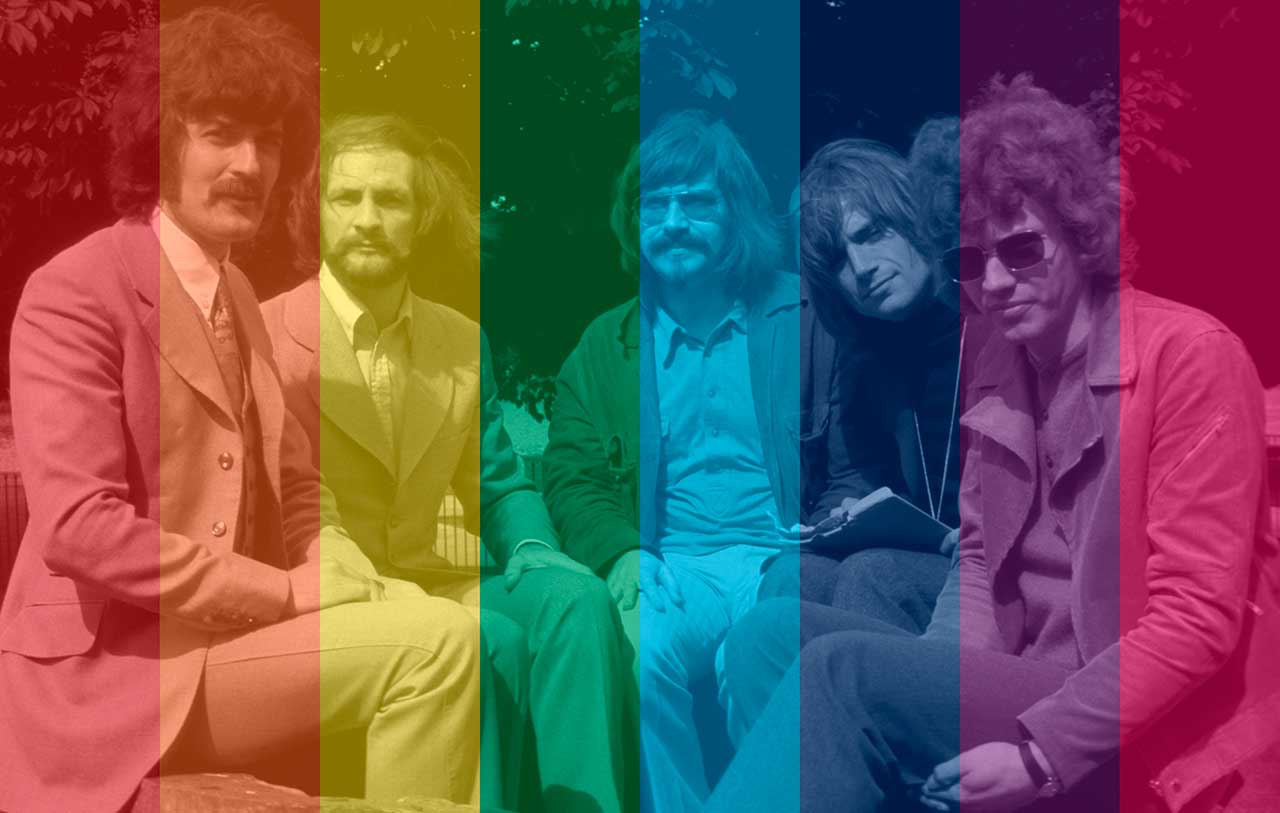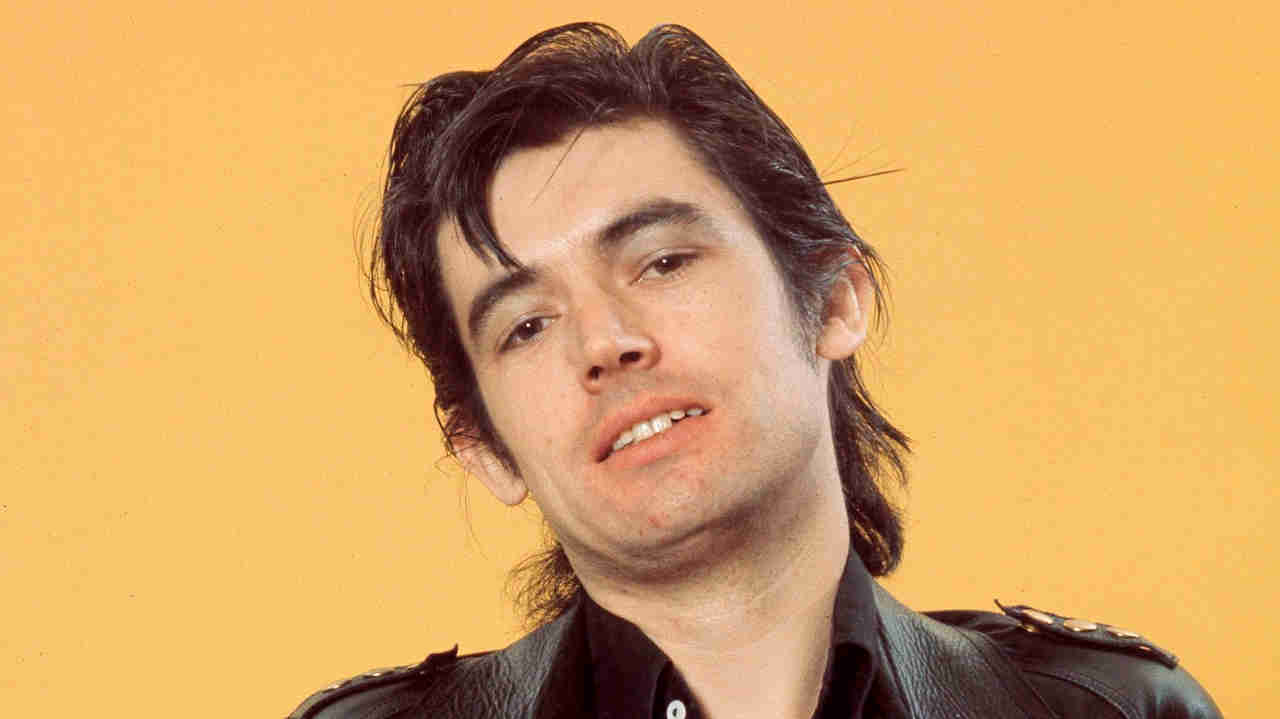The Moody Blues: stories of nights in technicolour satin and LSD
By tapping into the worries and hopes of ordinary people, The Moody Blues became a phenomenon. But a vital part of the band’s inspiration came from tapping into some mind-expanding chemicals

Though it’s hard to envisage The Moody Blues waving their freak flag high, let alone tripping on acid, in fact LSD played a crucial role in their development of the band both musically and personally.
“It became part of my life for a while,” says guitarist Justin Hayward. “Until after about 10 or 12 trips when I thought, ‘That’s probably it now. I’ve probably done it. But I’m really glad that I did.”
Keyboard player Mike Pinder notes the positive effects, adding, “It worked in terms of giving you more colour varieties to add to your sound. And you’d notice this more when you were in a meditative state. And the drugs helped you get to that meditative state.”
Although they never had the charisma of the Rolling Stones, the flamboyance of The Who or the dark glamour of Led Zeppelin, The Moody Blues had as much impact as any of them during the late 60s and early 70s. In Britain three of the seven Moody Blues albums released between 1967 and 1972 topped the charts. Three more went Top 5. The hip and trendy underground scene in London may not have been overly impressed by the band’s wistful tunes and simplistic cosmic philosophy, but outside the capital it was a very different story.
It was the same in America, only more so. All seven albums went gold and 1972’s Seventh Sojourn topped the charts for five weeks. Significantly, they were massively popular in middle America where their songs and lyrics struck a personal note with millions of people trying to make some sense out of the triumph of landing a man on the moon on one hand with the awful reality of the Vietnam war on the other. For a couple of years they were the biggest selling English band in America.
“We were a voice for a lot of those kids. We were saying what they were thinking,” says Hayward.
Bass player John Lodge adds. “It was this era of hope and awareness but they were being incredibly frustrated by the Vietnam War. We were relating to the 17-18 year olds who were going out there to fight, and they were coming to our gigs. There were a lot of strange conflicts going on in people’s minds. I still get people who come up and say, ‘I have to tell you, in 1968 I was in Vietnam, absolutely scared stiff. And I just kept playing your album over and over again’.”
Sign up below to get the latest from Classic Rock, plus exclusive special offers, direct to your inbox!
But there were others who believed The Moody Blues held the key to the mysteries of the universe.
“I remember people coming up to me and saying, ‘You will be piloting the spacecraft which is on its way’. And I was like, ‘Pardon?’” says Lodge.
Flautist Ray Thomas faced a more bizarre proposition after one show when a female fan cornered him and informed him that they would soon be boarding the spaceship together, where they would conceive the child of the Second Coming while John Lodge piloted the craft (Lodge was always the pilot, apparently). Looking for a gentle way out, Thomas said Lodge wouldn’t go unless the craft was painted white with gold borders. The woman replied that inter-galactic painters and decorators would be summoned forthwith.
“It did get a bit dark at times,” confirms Hayward. “Sometimes people’s obsessions about you could get a bit Play Misty For Me. There were people camping outside our hotel. I had my drink spiked a couple of times which meant that you could never drink anything that you hadn’t opened. And a lot of odd things started happening.”
Like the demonstration they encountered outside their hotel in Oklahoma because they had not scheduled a concert in a city where someone had recently prophesied the end of the world. It was assumed that The Moody Blues had inside knowledge. Lodge was less concerned about the people camping outside the hotel than he was about the people he found camping on his front lawn when he got back home.
“We were all in our mid-20s when this was going on and you start thinking, ‘Do these people know something I don’t?’ You had to try and keep it all in some kind of perspective.”
Hayward and Lodge were latecomers to The Moody Blues, brought in as songwriters in 1966 to halt the band’s decline into one-hit-wonder status after they’d topped the charts with Go Now. They ditched the blue suits and the cabaret circuit, added a Mellotron for the more adventurous, melodic songs they were writing and found a receptive student audience.
“They’d just sit and just watch,” recalls Lodge. “It was great because we could start experimenting on stage and seeing how far we could take it. It was a fantastic time because the audience were wanting it to work as well.”

During the Spring of 1967 Decca Records suggested that the band spearhead their new Deram label – set up to promote a newfangled sound called stereo – by recording Dvorak’s New World Symphony with a classical orchestra. But after the arranger heard their own songs he was impressed enough to change the concept to a series of themed songs with orchestral interludes.
Days Of Future Passed was the launch pad for The Moody Blues’ career. The state-of-the-art recording highlighted the band’s delicate harmonies and quality songs, two of which became worldwide hits: Hayward’s Tuesday Afternoon and Nights In White Satin. They were even bold enough to put a poem at the beginning and end of the album, recited by Pinder.
“He had this beautiful deep, sexy voice,” says Hayward. “We used to call him ‘007 Pinder’ because he used it to pull girls with. Mike recorded his vocals lying down in the dark.”
For their next album, In Search Of The Lost Chord, they stuck to the idea of a concept but ditched the orchestra.
“We decided that we’d play all the instruments ourselves,” says Lodge. “We went out and bought French horns and sitars and oboes and then we bought the Play In A Day books. I bought a cello. I used it for two albums before I realised that it’s not tuned the same way as a bass guitar.”
Their experimental, DIY approach paid dividends, particularly in the studio where they’d turn the mics up high and then play quietly, just to pick up all the ambient sounds (woe betide anyone who coughed during a take). They proved they could rock with Lodge’s heavy anthem, Ride My See Saw. And they also had their mellow side covered with Hayward’s Voices In The Sky.
Then there was Ray Thomas’s song. Left over from the previous album, Legend Of A Mind was an affectionate piss-take of acid guru Timothy Leary. At the time they’d never taken LSD, much less met the man, but both omissions were soon remedied. Leary even began appearing on stage with them in America whenever their paths crossed. They became lasting friends and shortly before he died he told them, “Your song made me more famous than I really was”.
When it came to LSD, they followed the gospel according to Saint Timothy. They wanted to get into it rather than out of it.
“There were four of us,” recalls Justin of his first trip. “I can’t include John because he’s never done anything like that. We prepared ourselves – got our drinks and everything else that we wanted – and when we were ready we took it together. I can remember it to this day. And I have to say it was a big part of what the music was all about.
"We were all searching for some kind of enlightenment. That took us to meditation. We went to visit the Maharishi (the same one The Beatles had been to and made famous) and did the transcendental meditation course.”
It was legendary promoter Bill Graham who first brought The Moody Blues to America in 1968, booking them into his Fillmore East in New York and his Fillmore West in San Francisco. But the shows were several weeks apart and they couldn’t afford to fly home so they set about getting some more bookings. This was how they discovered Middle America.
“I had thought that we were doing an arty kind of thing but what we found out was that the people who loved us were working Americans,” says Hayward. “We played all these industrial towns – Cleveland, Pittsburgh, Chicago, Detroit – and got a really strong, loyal audience.”
In Search Of The Lost Chord and their two 1969 albums, On The Threshold Of A Dream and To Our Children’s Children’s Children, consolidated their unique style, taking full advantage of fast-developing studio technology, while at the same time delving deeper into their own spiritual quest.
“We were speaking about ourselves as well as what we thought was happening on the planet,” explains Pinder. “It really was about being on the threshold of a dream of humanity. And the theme of To Our Children’s Children’s Children was about being out in space, preparing to land on another planet.”
No surprise then that the extra-terrestrial believers latched on to The Moody Blues. The band found themselves retreating into their own bubble to protect themselves. And then things started getting fraught.
“We’d heard everybody’s life stories,” says Hayward. “Tensions develop and then things start to be said which can’t be unsaid. We were forming camps within the band. And people would move camps. It all became very insular.”
Pinder was first to crack. “He stopped wanting to do it,” Justin says. “I found that very frustrating. When your best friend, who you know is capable of doing such great stuff… It was very upsetting for me.”
The strains don’t show on 1971’s Every Good Boy Deserves Favour or Seventh Sojourn the following year. In fact Lodge reckons Seventh Sojourn is a “fabulous culmination” of what the band had been building up to. But Hayward’s memories of both album are painful and he reckons that the band peaked with A Question Of Balance.

The 18-month world tour after Seventh Sojourn was the final straw. The band had simply stopped talking to each other. Lodge remembers his moment of truth. “We’d hired this 707 to take us around. We had ‘Moody Blues’ printed down the side. We even – and I can’t believe we did this – hired a keyboard player to play for us while we were flying.
"It was absolutely bizarre. So there were the five of us plus our agent, tour manager and road manager sitting up the front of this plane which could seat 200 people. I got up to go to the toilet at the back and as I walked down this empty plane I thought, ‘How eerie all this is… Whatever happened to the music?’ And I started feeling really lonely. All I could think of was getting back home.”
At the end of the tour they scattered. “We didn’t say yes to anything. We didn’t say no to anything either,” says Lodge. “Sometimes you have to step back and let everything flow over you before you make a decision.”
But they were still fragile when they regrouped in 1977 to record Octave.
“The studio in California burnt down, and we got marooned in the next studio by a series of landslides,” says Lodge. “The personal lives of some of the band were wrecked and our producer was having his own personal nightmares. It was all collapsing around us. I just remember thinking, ‘If we really want this we’re going to have to get through all this crap’.”
Most of them did, although Pinder bailed out before Octave came out. But despite the massive success of 1981’s Long Distance Voyager (a US Number One for three weeks) Hayward believes that it wasn’t until the mid-80s that he could put The Moody Blues’ halcyon era into perspective. Even now it remains a very private vista.
“It’s like a room in the house that only I go into. I exist as a different person in that room. It’s where all of those songs and this other person live. All of those songs were about that room and the things that happened in there with the band. There’s colour and light and imagination, childhood wonder, love and peace – this whole fantasy world. That’s what it was about and that’s what’s on those records.”
Henry Yates has been a freelance journalist since 2002 and written about music for titles including The Guardian, The Telegraph, NME, Classic Rock, Guitarist, Total Guitar and Metal Hammer. He is the author of Walter Trout's official biography, Rescued From Reality, a music pundit on Times Radio and BBC TV, and an interviewer who has spoken to Brian May, Jimmy Page, Ozzy Osbourne, Ronnie Wood, Dave Grohl, Marilyn Manson, Kiefer Sutherland and many more.

